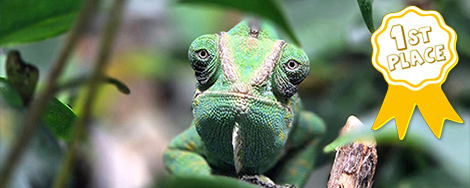Navigation
Install the app
How to install the app on iOS
Follow along with the video below to see how to install our site as a web app on your home screen.
Note: This feature may not be available in some browsers.
More options
You are using an out of date browser. It may not display this or other websites correctly.
You should upgrade or use an alternative browser.
You should upgrade or use an alternative browser.
Home Page
Recent Discussions
- Replies
- 87
- Views
- 3K
Did You Know?
Chameleons have laterally compressed bodies. This enables them to warm up quickly by presenting a larger surface area to the sun. It also helps some chameleon species blend in among the similarly shaped leaves in their environment.
The horns on a chameleon are made up of ringlike segments of inner bone covered by a hard keratin-like skin.
The smallest chameleon species is Brookesia micra with an adult length just over 1 inch (29mm). It hatches from an egg no bigger than a grain of rice!
True chameleons include the following genera: Archaius, Bradypodion, Brookesia, Calumma, Chamaeleo, Furcifer, Kinyongia, Nadzikambia, Palleon, Rhampholeon, Rieppeleon and Trioceros.
Chameleons can project their tongue up to 2.2 times their body length.
Chamaeleo namaquensis is found in the desert of Namibia. To cool off it will sometimes bury itself in the sand.
Chameleons change color by rearranging a lattice of nanocrystals in one of their top layers of skin cells called iridophores. Chameleons can then stretch this layer, broadening the nanocrystalline lattice, thereby causing it to reflect a different wavelength of light.
The word Rieppeleon is named after the scientist Olivier Rieppel.
The word Furcifer is derived from the Latin word “furci” or forked.
The word Brookesia is named after the British naturalist Joshua Brookes.
We love our sponsors
- Chameleons Only
- Mist King
- Tortoise Supply
- Great Lakes Hornworm
- LLLReptile
- Mulberry Farms
- Chameleon Paradise
- Coastal Silkworms
- Dubia Roaches
- Dragon Strand
- Chamelicious Chameleons
- Full Throttle Feeders
- Gulf Coast Silkworms
- Chromatic Chameleons
- Sticky Tongue Farms
- The Critter Depot
- Mantis Place
- Rebecca Wang Art
- iPardalis
- Rainbow Mealworms
- FramsChams
- Light Your Reptiles
- Neptune the Chameleon
- Tamura Designs
- Ready's Rainforest
Featured Blog Entries
-
The Philosophy of Gutloading PART 1.
- Kaizen
- Views: 54K
- Reaction score: 15
- Comments: 9
- General
The Philosophy of Gutloading Acknowledgements I would like to thank Anthony Herrel and Walter Tapondjou for their helpful advice on where to look... -
Veiled Chameleon Laying 101
- MissSkittles
- 7 min read
- Views: 22K
- Reaction score: 25
- Comments: 9
- General
Hi and congratulations on having a beautiful girl veiled chameleon. These little sweeties are near and dear to my heart, and I’ve learned from... -
Intro to Bio-Activity
- cyberlocc
- Views: 67K
- Reaction score: 35
- Comments: 23
- General
Introduction to Bio-Activity: As of recent times, a lot of folks have been asking questions, and for guides on Bio-active Enclosures. How to set...
Trending Topics
-
-
-
-
-
Halloween 2025 Edition Of Let Me Photoshop Your Chameleon!
- Started by Beman
- Replies: 38





